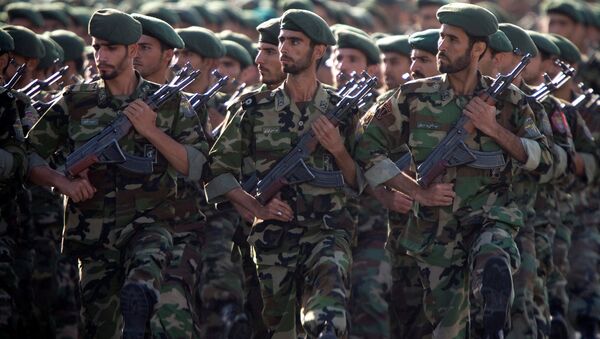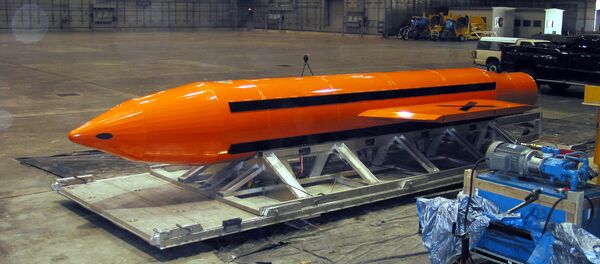By announcing about the creation of a 10-ton non-nuclear aviation bomb, Iran has sent a strong signal to Israel and Tehran's other potential adversaries in the Middle Eastern region, Vladimir Korovin, an expert at the Moscow State Institute of International Relations' Center for Military and Political Studies, told Sputnik.
"Israel is deeply worried about the fact that Iran is edging closer to its border in Syria," Korovin said, "Perhaps, this statement is addressed to Israel and Iran's other counterparts [in the region]."
The military analyst expressed confidence that Iran is not going to use the bomb against the United States. However, Israel, Saudi Arabia, the United Arab Emirates, and Bahrain are the main addressees of Tehran's "message," according to Korovin.
Describing the new bomb Hajizadeh specified that it could be launched from "Ilyushin aircraft" and dubbed it "the father of all bombs" in a reference to America's most powerful conventional ordnance.
Commenting on Hajizadeh's statement, Korovin pointed out that given the heavy load of the bomb it is most likely the Iranian top military commander referred to the modernized Ilyushin Il-76 (NATO reporting name: Candid) — a multi-purpose four-engine turbofan strategic airlifter, produced either in the USSR or the Russian Federation.
However, according to the expert, the possibility that the Iranian 10-ton munition will be used in real combat is doubtful, since the modified Il-76 bomber carrying the "father of all bombs" must be accompanied by jet fighters, and remain at a certain altitude flying to the target in the absence of fire resistance from the ground.
"Therefore — it's just a demonstration of [Iran's] capabilities," Korovin noted drawing historic parallels between the creation of Iran's biggest non-nuclear bomb and the country's launch of the first domestically made satellite Omid in 2009, which was delivered to low Earth orbit (LEO) by Iran's own Safir-2 rocket.
According to the expert, there is nothing special about the development of the munition by Iran: Korovin recalled that during the Second World War the USSR had a 5-ton bomb which was dropped from the aircraft as early as in 1943.
The US's own 22,000-pound (9,8 tons) conventional ordnance, GBU-43 (Guided Bomb Unit) has been in service since 2003.
It was first dropped in Afghanistan's Nangarhar province on April 13, 2017 as part of an air operation against Daesh (ISIS/ISIL), targeting underground facilities and a system of tunnels used by terrorists. The airstrike killed 92 Daesh terrorists.
For its part, Russia's Aviation Thermobaric Bomb of Increased Power (ATBIP), nicknamed the "Father of All Bombs" was developed in the early 2000s and successfully field-tested in 2011, after being dropped by the Tupolev Tu-160 strategic bomber.
Russian online newspaper Rossiyskaya Gazeta called attention to the fact that the Russian thermobaric weapon's destructive power is four times that of the GBU-43/B, while the ATBIP's blast radius is twice as that of the GBU-43.
Citing Deputy Chief of the Russian General Staff Alexander Rukshin the media outlet emphasized that the results of the ordnance's tests indicated that it is "comparable to a nuclear weapon in terms of efficiency and capabilities."




